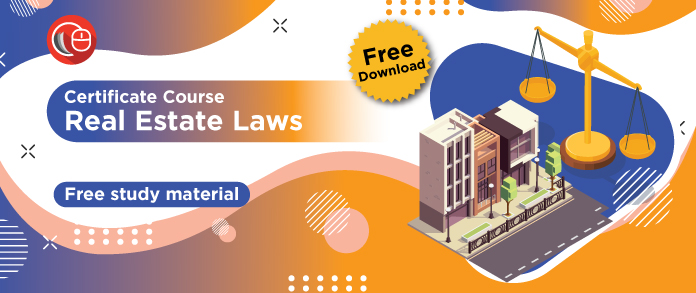This article has been written by Sanjana Pandey, pursuing a Certificate Course in Real Estate Laws from LawSikho.
Table of Contents
Introduction
The Real Estate Industry in India is plagued with the problem of stalled projects. Thousands of infrastructure investment projects have been stalled to date due to a variety of reasons but the role played by land disputes installing projects has been seriously underestimated.
Land Acquisition is the first step in a real estate project and when due consideration is not given to the process of verifying the title as well as acquiring the land, a lot of these projects get stalled and delayed due to disputes with respect to the said land.
Whenever a land has to be acquired, due diligence of such acquisition should be done to ascertain the ownership and title of the land. Post this, the land acquisition process can be initiated as per the prescribed procedure.
This article outlines the process of verifying the title of a land and the subsequent process of acquisition of the land.
The land title verification process
- The title verification is done to trace the history of ownership of the land up to the last thirty years to determine whether the title is marketable and good.
- The procedure outlined below lays down the considerations that need to be made when the title of land is being verified. The following steps are undertaken when a title verification is conducted:
- The owner of the property and the area needs to be ascertained by using the survey number of the land. A lot of states have digitized land records but if that hasn’t happened in a state, the land records can be accessed at the office of the sub-registrar by making an application prescribed although RTIs are the preferred mode of obtaining information. (In Maharashtra, this can be done by accessing https://mahabhunakasha.mahabhumi.gov.in/27/index.jsp)
- The next step shall be extracting primary documents to ascertain the ownership of the land.
The documents needed shall be:
- Record of Rights (7/12 extract, satbara utara); and
- Register of mutation (form VI).
The abovementioned land records are maintained at the office of the sub-registrar and an RTI can be made to receive these records.
Alternatively, due to the digitization of land records, information can be available online. (For example, in Maharashtra https://bhulekh.mahabhumi.gov.in/ can be accessed to view the 7/12 extract and Form VIIIA provided the district/taluka is known.)
If an issue is faced in finding the survey number required, the same can be received by making an RTI application with the Land Records department.
- The following documents should be analysed and examined to ascertain:
- The ownership, land share, encumbrances, pending land disputes, occupancy rights. (7/12 extract- Village form VI and XII together comprise of the extract or record of rights)
- Details of transactions the land has been part of including price of land as paid by current owner provided account number as mentioned in the 7/12 extract is available. (Village form VI D)
- Details of legal heirs of deceased owners of property. (Village Form VI C)
- Total land holding of the owner in specific land. (Form VIII A)
- Details of change in title of property. (Form VI or register of mutations)
- Possession can be investigated by visiting the land. It is crucial to ensure that a person who is the owner on the document also exercises the actual control over the land.
- Type of land- agricultural/non agricultural.
- Easement Rights, if granted to any other person.
- Search should be done at the office of Sub Registrar for additional documents:
- Reconciliation should be done with book no 1, Index no 1 and 2 maintained with the sub registrar to check for non-testamentary documents, names of parties to every registered transaction and particulars of property that is the subject matter of a registered transaction respectively. (can be accessed by making application to sub registrar)
- Encumbrance Certificate certifying piece of land free from encumbrances. (Form XVI) [N/A in certain states like Maharashtra]
- Release certificate can be requested from banks if traceable liability is reflected in 7/12 extract against a bank.
- The Power of Attorney of agents selling land should be verified (should be registered as well) and the land dealt with in the Power of Attorney should be checked as well.
- Additional searches can be made with the Registrar of Companies, the Courts to check for litigations and the Central Registry of Securitization Assets Reconstruction and Security Interest (CERSAI) to check for loans.
- In the title report prepared subsequently, all the aforementioned points of investigation should be clearly mentioned.
- After the title is verified as good and marketable, the land acquisition process should be initiated.
Land acquisition process
Land acquisition is normally done in three ways:
- Acquisition under Right to Fair Compensation and Transparency in Land Acquisition, Rehabilitation and Resettlement Act, 2013.
- Private negotiations with the landowners.
- Acquisition through other Acts.
Acquisition under Right to Fair Compensation and Transparency in Land Acquisition, Rehabilitation and Resettlement Act, 2013
- The Right to Fair Compensation and Transparency in Land Acquisition, Rehabilitation and Resettlement Act, 2013 (“LARR Act”) came into force after repealing the Land Acquisition Act, 1894. Under this Act, the District Collector facilitates the process of land acquisition when the acquisition is done for public purpose. Through this Act, the Developer is able to acquire land after complying with the provisions under this Act.
- The land acquisition process as under the 2013 Act is as follows:
A Social Impact Assessment study (SIA) is to be prepared by the project proponent (developer) under section 4. It is to be done in consultation (involving a public hearing with locals) with the concerned Panchayat, municipality or Municipal Corporation under section 5 outlining:
- Whether the acquisition will serve the public purpose,
- The estimation of how many families will be affected,
- The number of families which may have to be displaced,
- Other common properties which may be affected in their area,
- Whether any other alternative place has been considered by the government,
- the overall cost of the project and the benefit of the project.
An expert group under section 7 approves the social impact assessment (SIA) report and makes recommendations within 2 months about whether the project can go ahead or should be abandoned and also give the reasons for their decision.
Examination and approval of proposals for land acquisition and the social impact assessment report is done by the state government under Section 8 to determine whether the land is needed for any public purpose.
After the approval, as per section 11 of the Act whenever a land in any area is required or likely to be required for any public purpose, a public notification along with details of the land is to be published in the official gazette and 2 daily local newspapers in that locality. This is the initial acquisition notice.
A time period of 60 days is given for the general public to raise objections before the collector under Section 15.
Preliminary land survey reports are prepared under Section 12.
The Rehabilitation and Resettlement (R&R) report is prepared by the Administrator, Rehabilitation and Resettlement under section 16 and after review by the collector, made public under Section 18.
There is a publication of the declaration of the acquisition under Section 19 with a summary of the rehabilitation and resettlement scheme.
The land is marked, measured and planned by the collector and project proponent under Section 20 unless already done under Section 12.
Final notice under Section 21 is given to the persons interested to make any claims to compensations and rehabilitation and resettlement about the acquisition before the Collector within a period of 60 days.
Land acquisition award is made by the collector under Section 23 to persons claiming compensation and rehabilitation and resettlement after enquiry.
Possession of land shall be taken by the Collector under Section 38.
- It is pertinent to note that no consent is required for acquisitions for government projects, Consent of 70% of landowners required for the acquisition of land with respect to Public-Private Partnership projects and Consent of 80% landowners required for land acquisition for private projects.
- Anticipated timeline for land acquisition as per land is somewhere around 500 days. In addition to the entire process, there are several other clearances and approvals required for real estate projects to commence construction.
Acquisition through direct negotiations
- Direct private negotiations with landowners for acquiring land are permitted under the LARR Act, 2013. These can be resorted to so the land can be acquired without adhering to the long procedure under the LARR Act, 2013 or a small patch of land is left inadvertently during initial acquisition.
- It involves the constitution of a negotiation committee by the state government having the district collector as part of it. The compensation and multiplying factor are as per the State Government rules.
- An example of when this was done can be seen when the Maharashtra government, in 2015, decided to acquire land for new non-irrigation projects through negotiations by having a 7-member committee headed by the district collector for deciding the compensation payable to the landowner.
- The steps are as follows:
- A negotiation committee is constituted by the State Govt.
- Joint inspection is done of the alignment of requirements with all concerned departments & landowners.
- Negotiations with landowners are undertaken for fixing rates of the land.
- Recommendations by the committee and their approval by State Govt.
- Award by the Collector, payment is made and possession of Land is transferred.
Acquisition through other Acts
The LARR Act, 2013 has exempted acts as National Highways Act, 1956 and the Railways Act, 1989 from its purview. The acquisition under these Acts can be done as per the provisions in the respective acts although the compensation, rehabilitation and resettlement provisions of these acts have to be in consonance with the provisions under LARR Act, 2013.
Conclusion
Any lapses in title verification or the acquisition process can keep the land required for the project tied up in litigation and disputes leading to a delay in completion of the project and huge monetary losses. Therefore, it is essential to follow the steps in verifying the land title and in the subsequent acquisition as mentioned above (taking into account the differences that may need to be factored in due to different rules in different states) to ensure the start of the project is hassle-free and all the other approvals and clearances can be received.
References
- https://prsindia.org/billtrack/the-right-to-fair-compensation-and-transparency-in-land-acquisition-rehabilitation-and-resettlement-second-amendment-bill-2015
- https://www.business-standard.com/article/economy-policy/maharashtra-govt-decides-to-acquire-land-through-negotiations-115051300027_1.html
- https://legislative.gov.in/sites/default/files/A2013-30.pdf
- http://ficci.in/spdocument/20140/real-estate.pdf
- https://slidetodoc.com/land-acquisition-land-acquisition-options-1-land-acquisition-2/
- https://prsindia.org/billtrack/the-right-to-fair-compensation-and-transparency-in-land-acquisition-rehabilitation-and-resettlement-amendment-bill-2015
- https://rightsandresources.org/wp-content/uploads/2016/11/Land-Disputes-and-Stalled-Investments-in-India_November-2016.pdf
- https://www.livemint.com/industry/manufacturing/-63-billion-of-stalled-residential-projects-in-india-sound-warning-for-banks-11570168016947.html
Students of Lawsikho courses regularly produce writing assignments and work on practical exercises as a part of their coursework and develop themselves in real-life practical skill.
LawSikho has created a telegram group for exchanging legal knowledge, referrals and various opportunities. You can click on this link and join:
 Serato DJ Crack 2025Serato DJ PRO Crack
Serato DJ Crack 2025Serato DJ PRO Crack











 Allow notifications
Allow notifications



